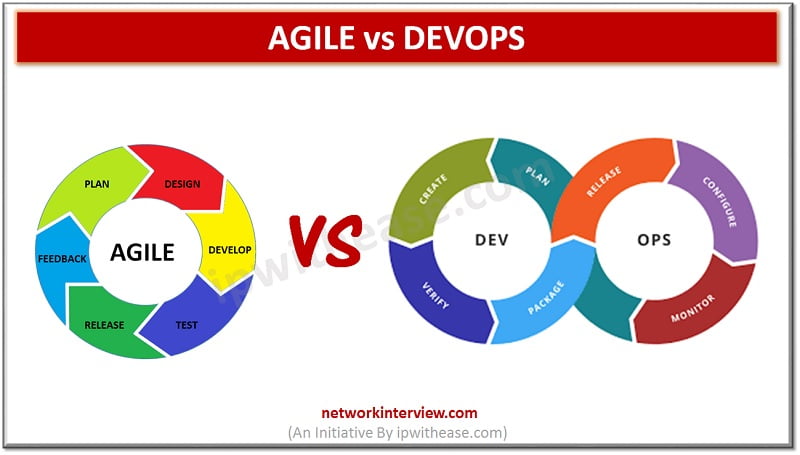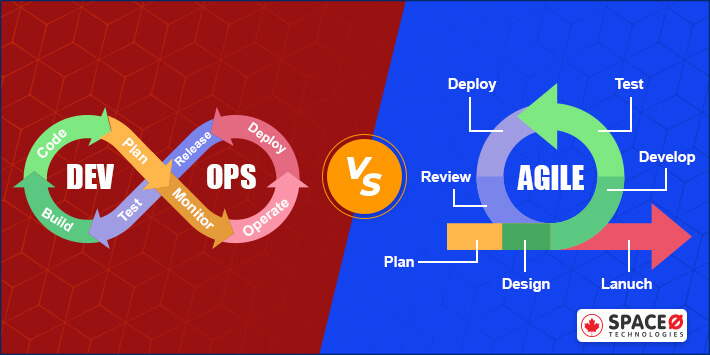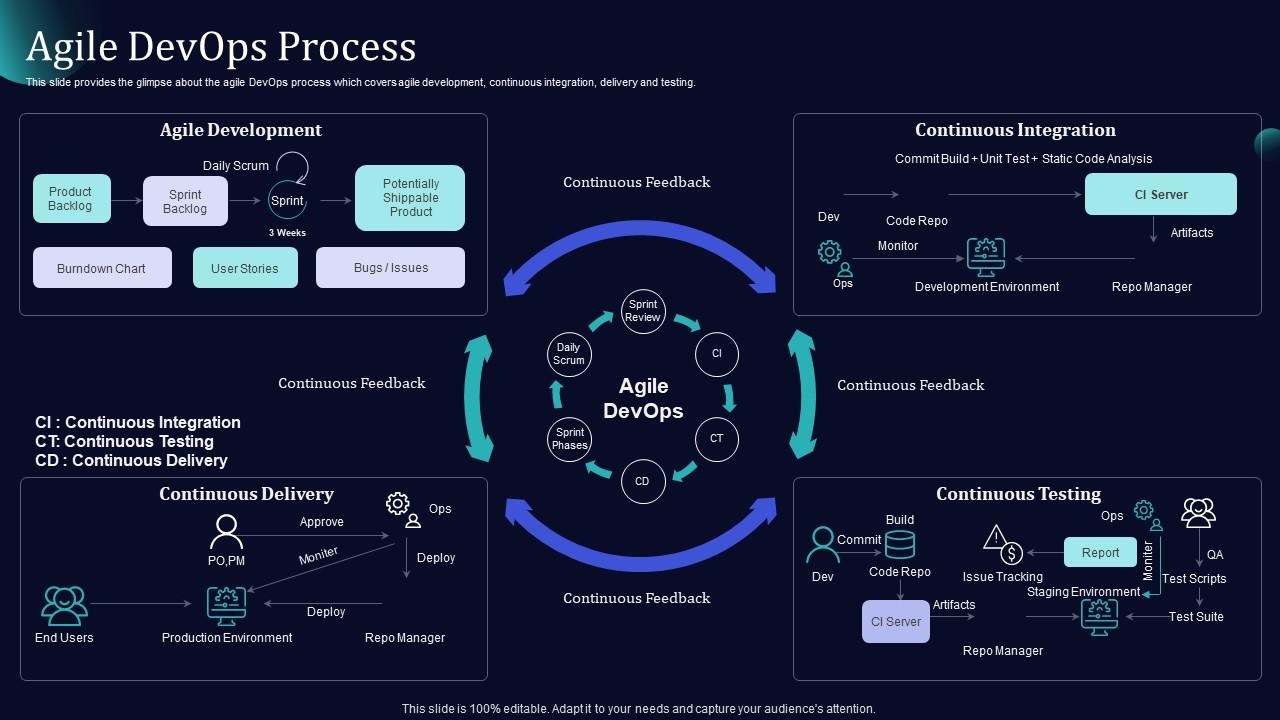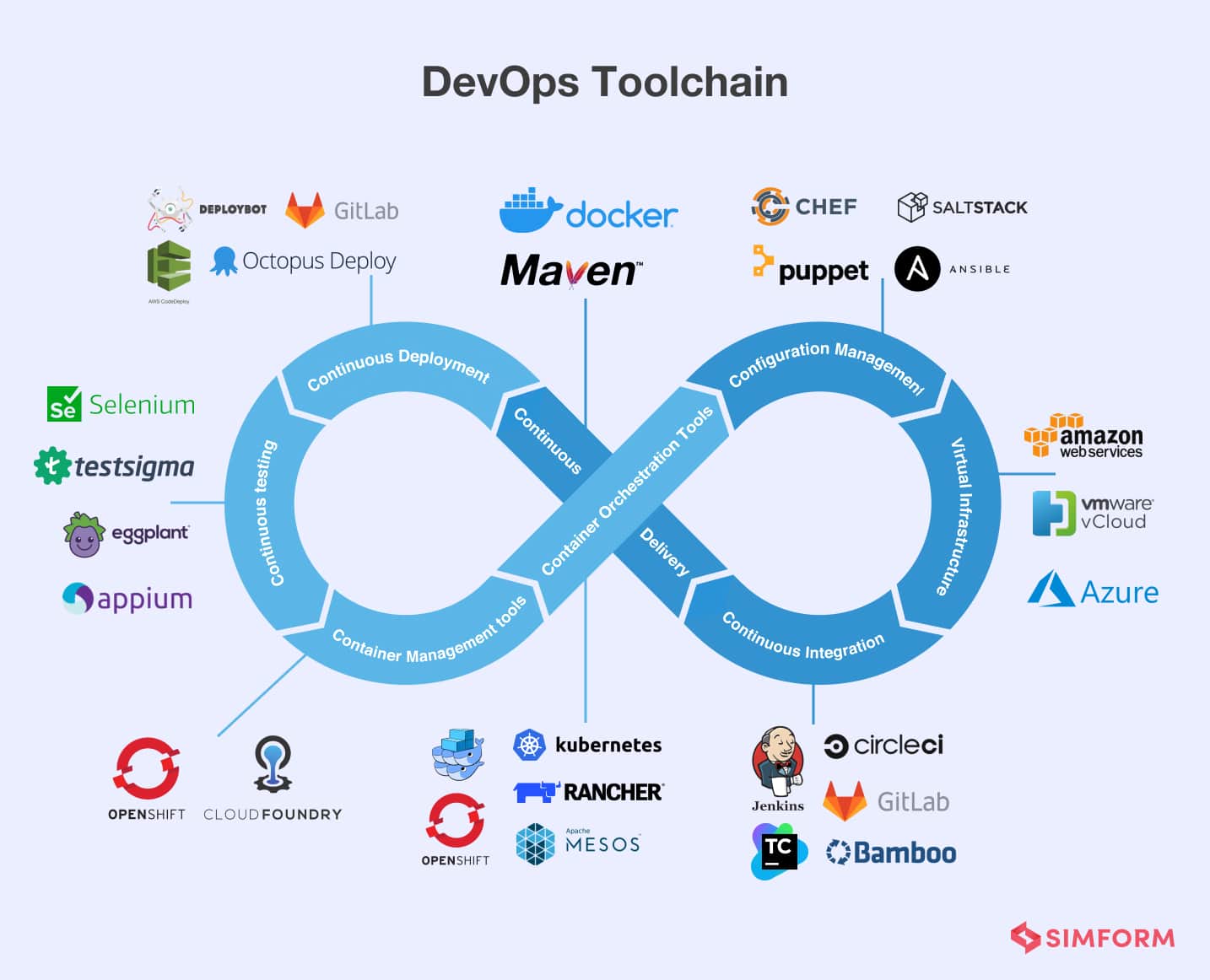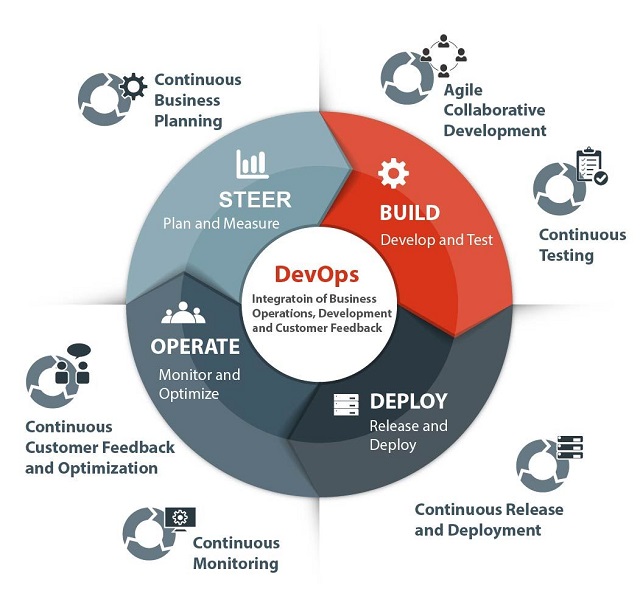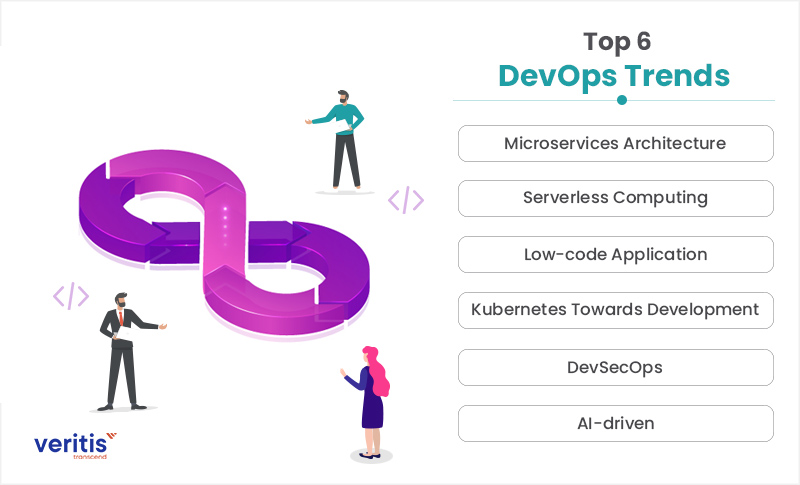Understanding Agile DevOps: A Holistic Approach to Software Development
Agile DevOps is a modern approach to software development and delivery that combines the principles of Agile methodologies with the practices of DevOps. Agile, with its focus on iterative development, customer collaboration, and continuous improvement, provides a solid foundation for DevOps, which emphasizes collaboration, automation, and continuous delivery. By integrating these two methodologies, organizations can achieve faster, more reliable, and more efficient software development and delivery.
The Agile DevOps approach prioritizes collaboration between development and operations teams, fostering a culture of communication, feedback, and shared responsibility. By breaking down silos and encouraging cross-functional collaboration, organizations can streamline their software development and delivery processes, reducing lead times, minimizing errors, and improving overall quality. Automation plays a crucial role in Agile DevOps, enabling teams to automate repetitive tasks, such as testing, deployment, and infrastructure management, freeing up resources for more value-added activities.
Continuous improvement is another key principle of Agile DevOps. By continuously measuring and analyzing performance metrics, teams can identify areas for improvement, set goals, and track progress over time. This iterative approach to improvement ensures that organizations stay agile and responsive to changing business needs and customer requirements.
In summary, Agile DevOps is a holistic approach to software development and delivery that combines the principles of Agile methodologies with the practices of DevOps. By prioritizing collaboration, automation, and continuous improvement, organizations can achieve faster, more reliable, and more efficient software development and delivery, ultimately driving business value and customer satisfaction.
The Role of Agile in DevOps: Synergizing Practices for Seamless Delivery
Agile methodologies and DevOps practices share many common goals, such as improving collaboration, communication, and feedback between development and operations teams. By integrating Agile principles with DevOps practices, organizations can create a powerful synergy that drives faster, more reliable, and more efficient software development and delivery.
Agile principles, such as iterative development, customer collaboration, and continuous improvement, align well with DevOps goals. Agile’s iterative approach to development, for example, enables teams to deliver small, incremental improvements to software on a regular basis, allowing for faster feedback and course correction. Customer collaboration, on the other hand, ensures that the software being developed meets the needs and expectations of end-users, reducing the risk of misaligned requirements and rework.
Continuous improvement is another key principle of Agile that aligns with DevOps. By continuously measuring and analyzing performance metrics, teams can identify areas for improvement, set goals, and track progress over time. This iterative approach to improvement ensures that organizations stay agile and responsive to changing business needs and customer requirements.
Agile also plays a crucial role in fostering a culture of collaboration, communication, and feedback between development and operations teams. By breaking down silos and encouraging cross-functional collaboration, organizations can streamline their software development and delivery processes, reducing lead times, minimizing errors, and improving overall quality. Agile’s emphasis on continuous feedback and course correction also ensures that teams are always aligned with business goals and customer needs.
In summary, Agile principles align well with DevOps goals, providing a solid foundation for collaboration, communication, and feedback between development and operations teams. By integrating Agile methodologies with DevOps practices, organizations can achieve faster, more reliable, and more efficient software development and delivery, ultimately driving business value and customer satisfaction.
Transforming Your Organization with Agile DevOps: A Step-by-Step Approach
Transforming an organization to adopt Agile DevOps requires careful planning, leadership buy-in, and a phased approach to implementation. By following a step-by-step roadmap, organizations can ensure a successful transition to Agile DevOps, achieving faster, more reliable, and more efficient software development and delivery.
The first step in adopting Agile DevOps is to assess the current state of the organization. This includes evaluating the existing software development and delivery processes, identifying areas for improvement, and setting clear goals for the transition. Key performance indicators (KPIs) should be identified to measure progress and success throughout the transition.
Leadership buy-in is critical to the success of an Agile DevOps transformation. Leaders must understand the benefits of Agile DevOps and be committed to providing the necessary resources, support, and training to ensure a successful transition. Cross-functional collaboration is also essential, as Agile DevOps requires close collaboration between development, operations, and other stakeholders throughout the software development and delivery process.
Training and development are key components of an Agile DevOps transformation. Teams must be trained on Agile methodologies, DevOps practices, and the tools and platforms that support Agile DevOps. This includes training on continuous integration and continuous delivery (CI/CD) pipelines, automated testing and deployment, and infrastructure as code. Ongoing training and development should be provided to ensure that teams stay up-to-date with the latest trends and best practices in Agile DevOps.
The transition to Agile DevOps should be implemented in a phased manner, starting with small, manageable projects and gradually scaling up to larger, more complex initiatives. This allows teams to gain experience and confidence with Agile DevOps practices and tools, while minimizing the risk of disruption to existing software development and delivery processes.
In summary, transforming an organization to adopt Agile DevOps requires careful planning, leadership buy-in, cross-functional collaboration, and training and development. By following a step-by-step approach, organizations can ensure a successful transition to Agile DevOps, achieving faster, more reliable, and more efficient software development and delivery.
Implementing Agile DevOps: Best Practices and Tools
Implementing Agile DevOps requires a focus on best practices and the use of tools and platforms that support continuous integration, continuous delivery, and infrastructure as code. By following these best practices and using the right tools, organizations can achieve faster, more reliable, and more efficient software development and delivery.
Creating a continuous integration and continuous delivery (CI/CD) pipeline is a key best practice for implementing Agile DevOps. A CI/CD pipeline enables teams to automate the build, test, and deployment of software, reducing lead times and minimizing the risk of errors and defects. Automated testing and deployment are critical components of a CI/CD pipeline, ensuring that software is thoroughly tested and deployed in a consistent and reliable manner.
Adopting infrastructure as code is another best practice for implementing Agile DevOps. Infrastructure as code enables teams to manage infrastructure, such as servers and networks, using the same version control and automation tools used for software development. This ensures that infrastructure is consistently configured and can be easily updated and managed, reducing the risk of errors and downtime.
Popular tools and platforms that support Agile DevOps include Jenkins, Docker, Kubernetes, and GitHub. Jenkins is an open-source automation server that enables teams to automate the build, test, and deployment of software. Docker is a containerization platform that enables teams to package and deploy software in a lightweight, portable format. Kubernetes is an open-source platform for automating the deployment, scaling, and management of containerized applications.
GitHub is a web-based platform for version control and collaboration that enables teams to manage code, track issues, and collaborate on software development. By integrating these tools and platforms into the software development and delivery process, organizations can achieve faster, more reliable, and more efficient software development and delivery.
In summary, implementing Agile DevOps requires a focus on best practices, such as creating a CI/CD pipeline and adopting infrastructure as code. Popular tools and platforms, such as Jenkins, Docker, Kubernetes, and GitHub, can support Agile DevOps by enabling automation, collaboration, and consistency in the software development and delivery process.
Overcoming Challenges in Agile DevOps: Common Pitfalls and Solutions
Implementing Agile DevOps can be a complex and challenging process, with common pitfalls that can hinder progress and hinder success. By understanding these challenges and implementing practical solutions and strategies, organizations can overcome these obstacles and achieve the benefits of Agile DevOps.
One common challenge in implementing Agile DevOps is resistance to change. This can come from individuals, teams, or the organization as a whole, and can manifest as reluctance to adopt new tools, processes, or ways of working. To overcome resistance to change, it is important to foster a culture of experimentation and learning, where teams are encouraged to try new things, learn from their experiences, and continuously improve.
Siloed teams are another common challenge in implementing Agile DevOps. Silos can exist between development and operations teams, as well as between other functions within the organization. To break down silos, it is important to establish clear communication channels, encourage cross-functional collaboration, and promote a shared understanding of goals and objectives.
Lack of standardization can also be a challenge in implementing Agile DevOps. Without standardization, teams may use different tools, processes, or ways of working, leading to inconsistencies, errors, and inefficiencies. To address this challenge, it is important to establish clear standards and guidelines, and to ensure that all teams are aligned and working towards the same goals.
To overcome these challenges, organizations can implement practical solutions and strategies, such as fostering a culture of experimentation and learning, breaking down silos, and establishing clear communication channels. Leadership support, cross-functional collaboration, and training and development are also critical components of a successful Agile DevOps transition.
In summary, implementing Agile DevOps can be a complex and challenging process, with common pitfalls such as resistance to change, siloed teams, and lack of standardization. By understanding these challenges and implementing practical solutions and strategies, organizations can overcome these obstacles and achieve the benefits of Agile DevOps, including faster, more reliable, and more efficient software development and delivery.
Measuring Success in Agile DevOps: Metrics and KPIs
Measuring the success of Agile DevOps initiatives is critical to ensuring that the benefits of this approach are realized. By tracking key performance indicators (KPIs) and metrics, organizations can identify areas for improvement, set goals, and track progress over time. In this article, we will explore how to measure the success of Agile DevOps initiatives, including metrics such as lead time, deployment frequency, mean time to recovery, and customer satisfaction.
Lead Time
Lead time is the time it takes to go from code commit to production. This metric is important because it measures the efficiency of the development and delivery process. By tracking lead time, organizations can identify bottlenecks, optimize workflows, and reduce the time it takes to deliver value to customers.
Deployment Frequency
Deployment frequency is the number of times code is deployed to production in a given time period. This metric is important because it measures the speed and frequency of software delivery. By tracking deployment frequency, organizations can identify opportunities to increase the speed and frequency of software delivery, reducing lead times and improving customer satisfaction.
Mean Time to Recovery
Mean time to recovery (MTTR) is the average time it takes to recover from a failure. This metric is important because it measures the resilience and reliability of the software delivery process. By tracking MTTR, organizations can identify opportunities to improve the resilience and reliability of the software delivery process, reducing downtime and improving customer satisfaction.
Customer Satisfaction
Customer satisfaction is a critical metric for any software delivery initiative. By tracking customer satisfaction, organizations can identify areas for improvement, set goals, and track progress over time. This can be measured through surveys, feedback forms, and other mechanisms for gathering customer feedback.
In conclusion, measuring the success of Agile DevOps initiatives is critical to ensuring that the benefits of this approach are realized. By tracking key performance indicators (KPIs) and metrics, such as lead time, deployment frequency, mean time to recovery, and customer satisfaction, organizations can identify areas for improvement, set goals, and track progress over time. By incorporating these metrics into the Agile DevOps process, organizations can continuously improve and deliver value to their customers in a rapidly changing landscape.
Scaling Agile DevOps: Best Practices for Large and Complex Organizations
As organizations grow and become more complex, scaling Agile DevOps can become a challenge. However, by following best practices and implementing the right strategies, large and complex organizations can successfully scale Agile DevOps and reap the benefits of faster, more reliable, and more efficient software development and delivery.
Use a Framework
Using a framework like SAFe (Scaled Agile Framework) or LeSS (Large-Scale Scrum) can help organizations scale Agile DevOps. These frameworks provide a structure for organizing teams, coordinating work, and managing dependencies. By using a framework, organizations can ensure that everyone is aligned and working towards the same goals, and that best practices are being followed.
Establish a Center of Excellence
Establishing a center of excellence (CoE) can help organizations scale Agile DevOps. A CoE is a team of experts who are responsible for driving Agile DevOps adoption, providing training and support, and ensuring that best practices are being followed. By establishing a CoE, organizations can ensure that there is a centralized source of knowledge and expertise, and that everyone has access to the resources they need to be successful.
Foster a Culture of Collaboration and Innovation
Fostering a culture of collaboration and innovation is critical to scaling Agile DevOps. By creating an environment where teams are encouraged to work together, share knowledge, and experiment with new ideas, organizations can unleash the full potential of Agile DevOps. This can be achieved by providing training and development opportunities, promoting cross-functional collaboration, and establishing clear communication channels.
Leadership Support
Leadership support is essential for scaling Agile DevOps. Leaders must provide the resources, support, and guidance necessary for successful Agile DevOps adoption. This includes providing training and development opportunities, promoting cross-functional collaboration, and establishing clear communication channels. By providing leadership support, organizations can ensure that everyone is aligned and working towards the same goals, and that Agile DevOps is integrated into the organization’s culture and DNA.
Clear Communication
Clear communication is critical to scaling Agile DevOps. By establishing clear communication channels, organizations can ensure that everyone is aligned and working towards the same goals. This includes providing regular updates on progress, sharing best practices and lessons learned, and promoting transparency and openness. By establishing clear communication channels, organizations can ensure that everyone is on the same page and that Agile DevOps is integrated into the organization’s culture and DNA.
Continuous Learning and Improvement
Continuous learning and improvement is essential to scaling Agile DevOps. By promoting a culture of experimentation and learning, organizations can ensure that they are always improving and optimizing their Agile DevOps practices. This includes providing training and development opportunities, promoting cross-functional collaboration, and establishing clear communication channels. By promoting continuous learning and improvement, organizations can ensure that they are always at the forefront of Agile DevOps best practices and innovations.
In conclusion, scaling Agile DevOps in large and complex organizations is possible by following best practices and implementing the right strategies. By using a framework, establishing a center of excellence, fostering a culture of collaboration and innovation, providing leadership support, promoting clear communication, and encouraging continuous learning and improvement, organizations can successfully scale Agile DevOps and reap the benefits of faster, more reliable, and more efficient software development and delivery.
The Future of Agile DevOps: Trends and Innovations
Agile DevOps is an ever-evolving field, with new trends and innovations emerging all the time. In this article, we will explore some of the most exciting and impactful trends and innovations in Agile DevOps, and how they can help organizations stay competitive and deliver value to their customers in a rapidly changing landscape.
Artificial Intelligence and Machine Learning
Artificial intelligence (AI) and machine learning (ML) are two of the most exciting and impactful trends in Agile DevOps today. By using AI and ML to automate tasks, analyze data, and make decisions, organizations can achieve faster, more reliable, and more efficient software development and delivery. For example, AI and ML can be used to automate testing, identify and resolve issues, and optimize workflows. By incorporating AI and ML into their Agile DevOps practices, organizations can unleash the full potential of these technologies and gain a competitive edge.
Serverless Computing
Serverless computing is another exciting trend in Agile DevOps. By using serverless computing, organizations can build and deploy applications without having to manage servers or infrastructure. This can help organizations achieve faster, more reliable, and more efficient software development and delivery, and free up resources for more strategic initiatives. By incorporating serverless computing into their Agile DevOps practices, organizations can unleash the full potential of this technology and gain a competitive edge.
Security and Compliance
Security and compliance are critical issues in Agile DevOps. With the increasing number of cyber threats and regulatory requirements, organizations must ensure that their software development and delivery practices are secure and compliant. By incorporating security and compliance into their Agile DevOps practices, organizations can build and deploy applications that are secure, compliant, and of high quality. This can help organizations protect their customers, their data, and their reputation, and stay on the right side of regulatory requirements.
Conclusion
In conclusion, Agile DevOps is an ever-evolving field, with new trends and innovations emerging all the time. By incorporating these trends and innovations into their Agile DevOps practices, organizations can achieve faster, more reliable, and more efficient software development and delivery, and gain a competitive edge. Whether it’s using AI and ML to automate tasks, serverless computing to build and deploy applications without managing servers or infrastructure, or security and compliance to protect customers and stay on the right side of regulatory requirements, there are many exciting and impactful trends and innovations in Agile DevOps that organizations can leverage to deliver value to their customers and stay ahead of the competition.

